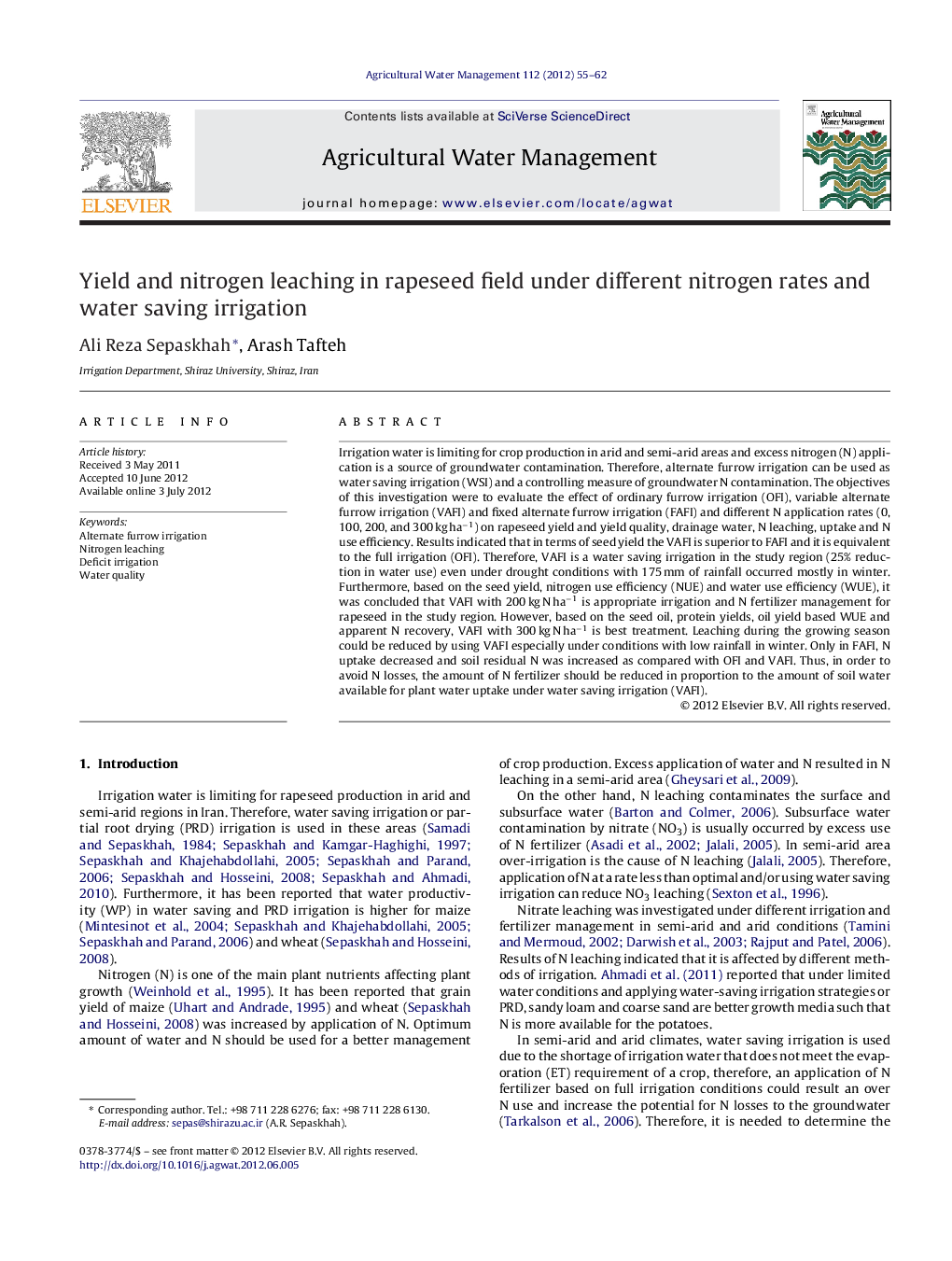| کد مقاله | کد نشریه | سال انتشار | مقاله انگلیسی | نسخه تمام متن |
|---|---|---|---|---|
| 4478991 | 1622967 | 2012 | 8 صفحه PDF | دانلود رایگان |

Irrigation water is limiting for crop production in arid and semi-arid areas and excess nitrogen (N) application is a source of groundwater contamination. Therefore, alternate furrow irrigation can be used as water saving irrigation (WSI) and a controlling measure of groundwater N contamination. The objectives of this investigation were to evaluate the effect of ordinary furrow irrigation (OFI), variable alternate furrow irrigation (VAFI) and fixed alternate furrow irrigation (FAFI) and different N application rates (0, 100, 200, and 300 kg ha−1) on rapeseed yield and yield quality, drainage water, N leaching, uptake and N use efficiency. Results indicated that in terms of seed yield the VAFI is superior to FAFI and it is equivalent to the full irrigation (OFI). Therefore, VAFI is a water saving irrigation in the study region (25% reduction in water use) even under drought conditions with 175 mm of rainfall occurred mostly in winter. Furthermore, based on the seed yield, nitrogen use efficiency (NUE) and water use efficiency (WUE), it was concluded that VAFI with 200 kg N ha−1 is appropriate irrigation and N fertilizer management for rapeseed in the study region. However, based on the seed oil, protein yields, oil yield based WUE and apparent N recovery, VAFI with 300 kg N ha−1 is best treatment. Leaching during the growing season could be reduced by using VAFI especially under conditions with low rainfall in winter. Only in FAFI, N uptake decreased and soil residual N was increased as compared with OFI and VAFI. Thus, in order to avoid N losses, the amount of N fertilizer should be reduced in proportion to the amount of soil water available for plant water uptake under water saving irrigation (VAFI).
► PRD with 200–300 kg N ha−1 was appropriate for rapeseed, oil and protein yields.
► Appropriate N recovery and efficiency was obtained in PRD with 200–300 kg N ha−1.
► PRD with 200–300 kg N ha−1 was appropriate for WUE of seed and oil production.
► PRD decreased drainage water and N leaching to the depths lower than crop root.
► N loss is avoided in PRD in relation to the amount of N fertilizer and available water.
Journal: Agricultural Water Management - Volume 112, September 2012, Pages 55–62